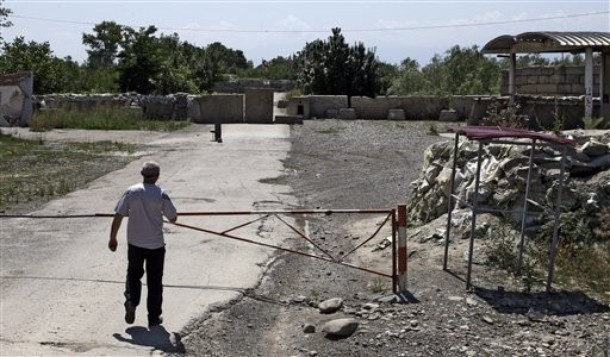
Incidents in Georgian Conflict Zone Ahead of War’s First Anniversary
Publication: Eurasia Daily Monitor Volume: 6 Issue: 150
By:

Ahead of the first anniversary of the Russia-Georgia war (August 7), Russian and South Ossetian forces are creating small-scale incidents with a potential for escalation on both sides of the demarcation line (Interfax, international news agencies, July 27 – August 5). These incidents, ongoing since late July, are of far lower intensity, compared with the shelling of Georgian positions and administrative offices in South Ossetia during the first days of August 2008 (preceding the Russian forces’ August 7 move through the Roki Tunnel). The pattern, however, seems similar, designed to draw a Georgian response to be followed by Russian counter-retaliation, triggering an escalation process that the Russians would control at every stage.
In essence, that is what developed in early August 2008 in Georgia’s South Ossetia region. The Russians had already demonstrated a textbook-case application of that scenario in July 1992 in the Transnistria conflict, but few remembered or cared to study it afterward. Attacking and seizing Moldovan positions and offices in relatively low-intensity clashes (ignored by the outside world), the Russians forced Moldova’s then-president Mircea Snegur to choose between abandoning the territory or responding with overt military force (which Russia then publicized for the world, portraying Moldova as the aggressor). When the Moldovan president launched a full-scale conventional defensive operation, the Russians counter-escalated with overwhelming force which the Moldovans could not remotely match. It was the first demonstration of Russia’s "peacekeeping" version, known as "coercion to peace" (prinuzhdeniye k miru) as officially designated in 2008 against Georgia.
One year later, many in the West continue debating whether Russia merely "responded disproportionately" to Georgia’s defensive move (albeit in internationally recognized Georgian territory) or whether President Mikheil Saakashvili allowed himself to be provoked into responding to those Russian moves in South Ossetia in August 2008. Both sides to this debate seem to overlook the Russian escalation-counter-escalation scenario, which worked as pre-planned against an isolated country in a one-on-one situation.
A new ingredient at the moment is the Russian and South Ossetian authorities’ attempts to push the demarcation line (or administrative boundary) farther inside Georgia. At several locations around South Ossetia’s perimeter, Russian troops or their Ossetian protégés are moving checkpoints and "border" posts, nibbling at Georgian-administered territory; or are publicly laying claim to additional bits of such territory. The locations include the village of Kveshi (Gori district) and the Mamisoni, Kobi, and Truso gorges (in the Tusheti and Kazbegi districts and Racha region, respectively). The land areas involved are tiny and the current situation on the ground uncertain, but the potential for tensions and incidents cannot be discounted. When the Mamisoni border checkpoint was reported to be relocated deeper inside Georgia, radical oppositionists in Tbilisi promptly accused the government of yielding Georgian territory (Civil Georgia, Rustavi-2 and Imedi TV, July 29 – August 4).
In late July, the Russian interior ministry claimed without citing any facts that hundreds of armed rebels were planning to enter Russia’s North Caucasus territory from Georgia (Rezonansi, July 30). On August 1 and 3, Russia’s foreign and defense ministries accused Georgia of shelling Tskhinvali and nearby villages; and threatened that Russia would respond with full military force (Interfax, August 1, 3). The Georgian government has repeatedly called international attention to these threats, ahead of the August 7 war anniversary (Ministry of Foreign Affairs press releases, August 1 – 4). Saakashvili takes the position that "We ourselves would never start a conflict with the Russians, although we would resist in the case of aggression." The August 2008 war, he suggested, was facilitated by "world neglect" of the situation on the ground (Reuters and RTL, August 4).
By increasing stale accusations, tinkering with demarcation lines, and creating small-scale shooting or mine-blasting incidents, Russian authorities are apparently testing the international response. They may grow bolder if that response, or sheer attention to the situation on the ground, slackens as it usually does during the August vacation period. Given that pattern, Russia’s offensive operation launched on August 7, 2008 could be and was anticipated, albeit not in the form it ultimately took (EDM, July 11, August 4, 2008).
The European Union’s Monitoring Mission (EUMM), deployed in Georgia since September 2008, is the sole remaining international presence in the conflict theater. Russia terminated the U.N. and OSCE presence in Abkhazia and South Ossetia, respectively, as of June this year by vetoing the prolongation of those missions’ mandates. On July 27 in Brussels, the Council of the European Union prolonged the EUMM’s mandate until September 2010. As this decision indicates, Russia remains in violation of the August 12 and September 8, 2008 armistice agreements, which require the withdrawal of troops to the positions held prior to the outbreak of hostilities (Council Conclusions, July 27).




